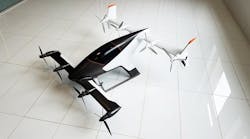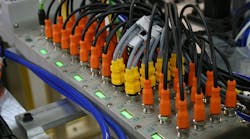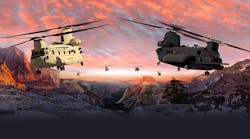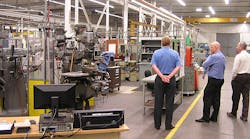“Just crazy enough to work …” was a punchline in countless caper comedies and adventure films of the 1960s and 70s, when unlikely partners with access to high-tech engineering was a reliable theme for mass entertainment. Now, it’s the background to mass marketing, and with drones in the air and self-driving vehicles on the way, engineering labs are the launch platforms for hot commercial ventures. Their partners, likely or not, are designers and manufacturers, and the work they speed along toward realizations quickly moves from "concept” to “project.”
And so now there are machine shops taking on such projects, supplying the manufacturing insight to the mechanical, material, and engineering reality that will put these projects on a track toward production.
This is the setting in which we find Bay Area Machinist, a full-service machine shop in Hayward, Calif., and a manufacturing partner to one of those “just crazy enough to work” projects moving from the development lab to full-scale testing.
The project is called Vahana, and it’s summarized as “an electric, self-piloted vertical takeoff and landing (VTOL) passenger aircraft.” It’s being guided forward by A3 (that’s “A-cubed”), a Silicon Valley project center backed by Airbus.
The Vahana concept is to build an aircraft that 1) needs no runways; 2) is self-piloted; and 3) can automatically detect and avoid obstacles and other aircraft. It is being designed to carry a single passenger or cargo. The goal is stage the first certified passenger aircraft without a pilot, with a full-size prototype to be in flight before the end of this year.
A “productizable demonstrator” is anticipated by 2020, according to Vahana.
“At Vahana we’re hyper-focused on efficiently developing our aircraft,” according to said Zach Lovering, project executive. This puts a heavy reliance on our partners to think critically about the work we’re doing and where improvements can be made.
“To that end, working with Bay Area Machinist has brought immense value to the project. Their team consistently delivers on time, and their parts are always of the highest quality,” he continued. “But, beyond just delivering parts, they consistently provide a second look at ways we can save both time and money as we build the future of flight.”
There it is: the role of the shop is to keep Vahana’s big concept on-track for its prototype takeoff later this year, and it does this in part by grounding (ahem) those ideas in the reality of manufacturing component parts.
A third member of this partnership is FlightHouse Engineering LLC, a Portland, Ore., designer of aircraft and UAV systems, selected last year to design and manufacture composite airframes for Vahana. FlightHouse then assigned some of its production needs to Bay Area Machinist.
“While there are many sources for machined parts, there are few that can match the level of expertise and skill that Bob and his team bring,” according to co-founder Calder Hughes. He credited the shop for helping the project meet its performance, cost, and schedule requirements.
Bay Area Machinist is something of start-up, too. Established in 2015, it deploys two three-axis CNC milling machines (and “a career’s worth of hand tools,” according to principal owner Bob Hegdahl) to produce mainly aluminum parts for aerospace and medical device manufacturers. Some other projects find the shop working in steel, plastic, low-density foam and ceramic fiber materials.
Hegdahl's contribution, it seems, is to take concepts that may seem crazy and make them work. He draws on manufacturing skill developed over decades to bring the designs into physical reality. While the assignments arrive from FlightHouse as “fully engineered aircraft parts,” by executing the design Bay Area Machinist provides the proof of manufacturability.
“When we're young, we need help, and we need mentoring,” Hegdahl mused, in a way that will be familiar to shop owners everywhere. “Talented engineers are no exception. Using my 40 years of experience, I work closely with the Vahana team, ensuring a cost-effective, manufacturable product.
“My suggestions typically come in the form of 'thru hole versus blind' and 'fillet sizes versus cutter diameters,' and simple things of that nature,” he demurred.
“For most of this year, my focus was centered around the metallic parts for the canards and main wings of the aircraft. Currently I'm working on testing fixtures for those parts,” he detailed, adding: “I'm anticipating being a part of the next generation of this project.”
It would be wise of the A3 and FlightHouse engineers to keep this sort of expertise on board as their concepts progress toward a prototype, and then toward commercial realization. Hegdahl is practical enough to understand the limits of design, and sufficiently enthusiastic about the work to keep it on course.
“Like many machinists, I've always had an interest in owning my own shop. Two years ago,” he recalled, “I allowed myself this opportunity.”
And now, it may be a machinist’s experience that guides the electric, self-piloted VTOL aircraft toward takeoff. “It's been a great experience for my company, and I believe mass production of this aircraft will happen in my lifetime,” Hegdahl said, “and I'm proud to have played a part.”










